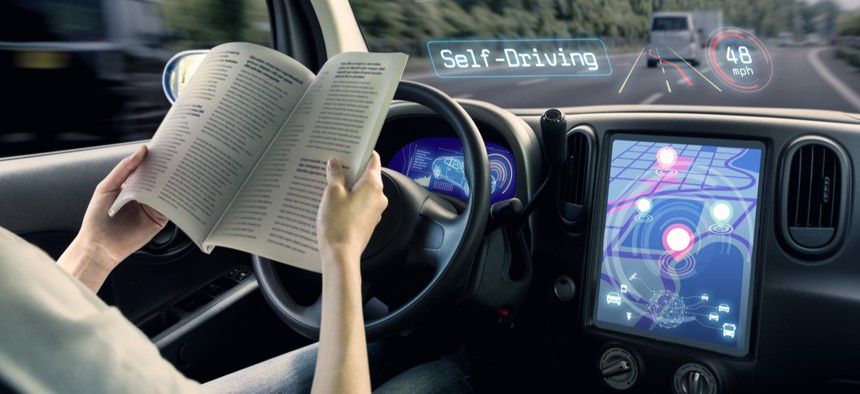Autonomous Vehicle Standards Don’t Have to Reinvent the Wheel

metamorworks/Shutterstock.com
Embrace the approach already taken by experts.
Today, the U.S. faces an important question: how to ensure the safety of autonomous vehicles before they become commonplace on our roads. Given how many companies are developing AVs, AV-adjacent technologies and AV programs across industries, answers to that question may vary depending on your knowledge of or stake in the field. As the National Highway Traffic Safety Administration gathers public input on the issue, the competing approaches to AV safety are becoming more obvious—and have the potential to create serious challenges.
Competing and misaligned AV standards will impact consumers determining which brands to buy in which regions, policymakers attempting to unify regulations, and transit agencies and transportation companies looking to add AVs to their fleets. This is in addition to the impact on the AV industry itself, which will have to conform to various safety standards based on these multiple safety approaches while also responding to the latest international industry standards set by organizations such as the Institute of Electrical and Electronics Engineers, or IEEE, the world’s largest technical professional organization and an internationally respected standards body. If NHTSA’s and IEEE’s approaches differ on a fundamental level, confusion about the way in which we evaluate the performance of automated vehicles may make it difficult for consumers and agencies to evaluate AVs or justify purchases. Such differences may also prevent U.S. safety standards from aligning with standards in the rest of the world.
A solution to this problem exists: embrace the approach already taken by experts—scholars, engineers, automakers and industry representatives—who came together to develop a technology-neutral safety standard. The forthcoming IEEE P2846 standard provides a valuable framework for familiar driving scenarios, such as car-following, driving adjacent to other road users, intersections, occlusion scenarios involving pedestrians and bicyclists and more. The standard also defines a set of assumptions automated vehicles must consider when navigating these scenarios. This allows an AV to evaluate and respond to situations, just as a human driver does, based on what is reasonably foreseeable, not a theoretical worst-case.
Because AVs can have faster response times and more precise navigation capabilities than human drivers, AV safety models based on a standardized set of reasonable worst-case assumptions have the potential to drastically improve road safety. Intel and Mobileye previously proposed the Responsibility-Sensitive Safety (RSS) model, a formal, mathematical model that provides an open, transparent, technology-neutral approach that governments and the public can use to understand how the good driving behaviors we were taught as humans can be translated to machines.
The RSS model was considered by the IEEE alongside the input of many other experts, engineers and industry groups while IEEE was developing its standard. Regardless of the particular AV safety model implemented in the U.S., the ability to set reasonably foreseeable worst-case assumptions about the behavior of other road users is essential for an automated vehicle’s ability to navigate in the real world. That ability will be critical as AVs begin to be introduced into our transit system and as humans and AVs start sharing the road.
Given how many AVs are currently in development and how many transit agencies are piloting tests of AVs within fleets, establishing nationwide safety standards needs to be done sooner rather than later. With industry safety standards like P2846 forthcoming from IEEE, NHTSA should begin establishing standards in the U.S. now to help position the industry before consumers start adopting AVs broadly. We look forward to a future where nationwide AV safety standards protect consumers and improve safety on the road.
Jack Weast is an Intel fellow and vice president for automated vehicle standards at Mobileye.
NEXT STORY: What Robots Need to Become Better Helpers



